Half the fuel gone from iconic Dounreay reactor
15th October 2019
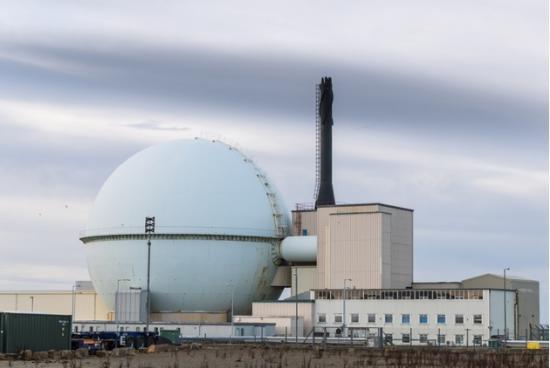
Half of the last remaining radioactive fuel elements jammed for decades inside the iconic Dounreay Fast Reactor (DFR) have now been removed.
DFR with its famous dome once led the world in fast breeder technology.
The reactor was built in the 1950s at a time when there was a worldwide shortage of uranium for electricity generation. Its core was surrounded by a blanket of natural uranium elements that, when exposed to the effects of the radiation, would "breed" to create a new fuel, plutonium. After the reactor closed in 1977 most of the core fuel was removed. But work to remove elements from the breeder zone came to a halt when some were found to be swollen and jammed. Almost 1,000 - around two-thirds of the total – were left in place.
Decommissioning the 60-year-old reactor is one of the most technically challenging projects in the Nuclear Decommissioning Authority estate and removing the breeder elements has been a top priority.
After designing and testing remotely-operated equipment, a decommissioning team began recovering the elements in 2017, using purpose-built tools that reached down into the reactor to cut the breeder elements free and lift them into a flask for removal to the next stage of the process.
The success of the locally manufactured tooling has played a big part in the successful removal of half the remaining radioactive fuel inventory inside the reactor vessel. Local companies who manufactured mechanical equipment to demanding timescales included JGC Engineering and Technical, Precision Machining Services, and Calder Engineering. Contec Design Services carried out electrical, control and instrumentation works.
Senior Project Manager Raymond Hill commented:This is a challenging project and I am pleased that we are making good progress on the removal of the elements, which is contributing towards the Nuclear Decommissioning Authority's mission to clean up the UK’s nuclear legacy.
Related Businesses
- Dounreay Stakeholder Group
- Nuclear Decommissioning Authority
- Dounreay
- Cavendish Dounreay Partnership Ltd
Related Articles
TAE Technologies and UKAEA partner to commercialise fusion tech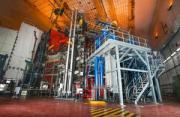
Joint venture to develop neutral beams for fusion and non-fusion applications, creating high-skilled jobs and establishing a critical supply chain. TAE Technologies, a leading US private fusion energy firm with over 25 years at the forefront of scientific innovation, today announces a bilateral and reciprocal investment commitment with the United Kingdom's national fusion laboratory, the UK Atomic Energy Authority (UKAEA) to commercialise TAE's proprietary particle accelerator technology for the global market.
Buried Hazards, Unfinished Business - What the NDA's 2025 Progress Report Really Tells Us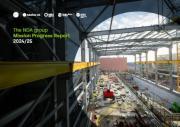
The Nuclear Decommissioning Authority (NDA) has released its 2025 Mission Progress Report is a slightly sprawling document chronicling one of the UK's most complex environmental undertakings. The safe dismantling of its early nuclear legacy.
New recruit officers join the Civil Nuclear Constabulary
The Civil Nuclear Constabulary (CNC) welcomes its newest recruits. The CNC hosted two passing out parades for the graduating Authorised Firearms Officers (AFOs) of Initial Foundation Programme (IFP) 106.
Dounreay's next generation of talent honoured by apprentice award
Nuclear Restoration Services Dounreay's Kate Thomson has won Modern Apprentice of the Year at the Highlands & Islands Apprenticeship Awards in Inverness. Kate, who is in the second year of her apprenticeship in commercial and quantity surveying, said she was thrilled by the honour.
Taskforce calls for radical reset of nuclear regulation in UK
Nuclear Regulatory Taskforce publishes final report and calls for radical reset of overly complex nuclear regulatory system. An overly complex nuclear regulatory system has contributed to the "relative decline" of the UK's ability to deliver faster and cheaper nuclear projects.
NDA working with private developer to accelerate Chapelcross Hub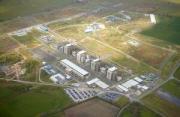
The NDA group has announced it's working with CX Power as the strategic developer to support the delivery of the green energy hub masterplan at Chapelcross. The Nuclear Decommissioning Authority (NDA) group has announced it's working with CX Power as the strategic developer to support the delivery of the green energy hub masterplan at Chapelcross, a programme set to transform the region.
Funding approved for Wick Harbour port consultant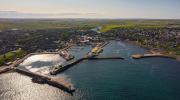
A specialist ports consultant has been appointed to develop a long-term strategic plan for Wick Harbour Authority (WHA) in Caithness. WHA has secured £47,775 from Highlands and Islands Enterprise (HIE) and the Nuclear Restoration Services, NRS Dounreay towards the cost of the services.
NDA announces £1 million funding to accelerate clean energy in West Cumbria
NDA announces £1 million investment to develop masterplan for clean energy development on land adjacent to Sellafield. The Nuclear Decommissioning Authority (NDA) has announced today it's investing £1 million of funding to develop the masterplan for a clean energy development on land adjacent to Sellafield, known as Pioneer Park.Fallon Campbell From Melvich Near Thurso Named As Apprentice of the Year At Awards In London
Rising star from North Scotland honoured at event to celebrate brightest and best in industry. An electrical apprentice from North Scotland is celebrating after being recognised for her contribution to industry at the 13th annual Engineering Construction Industry ECI Training and Development Awards in London.
The NDA Group Graduate Programme: more than a job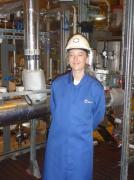
The NDA group graduate scheme offers far more than just a stepping stone into the nuclear industry; it's a chance to grow professionally, explore new places, and become part of a supportive community. Nuala Ledward, Assurance and Performance Graduate, shares how her secondment to Dounreay brought these benefits to life.
